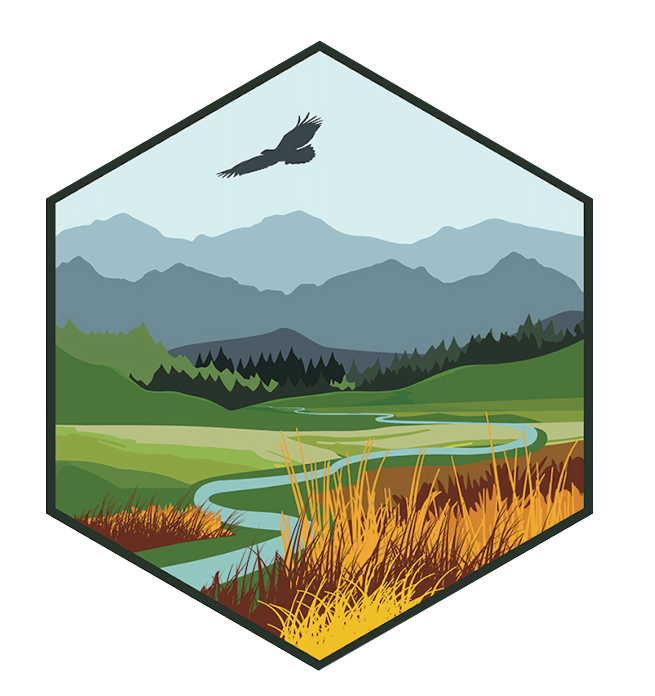Climate change is leading to global increases in extreme events, such as drought, that threaten the persistence of freshwater biodiversity. Identification and management of drought refuges, areas that promote resistance and resilience to drought, will be critical for preserving and recovering aquatic biodiversity in the face of climate change and increasing human water use. Although several reviews have addressed the effects of droughts and highlighted the role of refuges, a need remains on how to identify functional refuges that can be used in a drought management framework to support fish assemblages. We synthesize literature on drought refuges and propose a framework to identify and manage functional refuges that incorporate species physiological tolerances, behaviours and life-history strategies. Stream pools, perennial reaches and off-channel habitat were identified as important drought refuges for fish. The ability of refuges to improve species resistance and resilience to drought requires careful consideration of the biology of the target species and targeted management to promote persistence, quality and connectivity of refuges. Case studies illustrate that management of drought refuges can be challenging because of competing demands for water, incomplete knowledge of ecological requirements for target species and the increasing occurrence of multi-year droughts. Climate adaptation is increasingly important, and drought refuges can increase fish resistance and resilience to climate-related drought across the riverscape.
Responding to climate impacts and expanding adaptation efforts necessitates getting the right knowledge and tools in the hands of land managers and decision-makers. In 2022–2023, several regional US Geological Survey Climate Adaptation Science Centers partnered with the US Fish and Wildlife Service (FWS) Science Applications Program on the first targeted climate training series designed for the FWS Grassland Ecosystem Team. This training spanned multiple months and formats with self-paced virtual lessons, webinars, and an in-person workshop. As the FWS Grassland Ecosystem Team is tasked with conservation planning for grassland birds and other species, the focus of the workshop was an interactive collaborative activity incorporating species adaptive capacity assessments, future climate projections, and adaptation menus into the decision-making process. Herein, we describe the methods used to design and deliver the training series, as well as lessons learned for future climate literacy programs aimed at natural resource managers.
Terrestrial evapotranspiration is the second-largest component of the land water cycle, linking the water, energy, and carbon cycles and influencing the productivity and health of ecosystems. The dynamics of ET across a spectrum of spatiotemporal scales and their controls remain an active focus of research across different science disciplines. Here, we provide an overview of the current state of ET science across in situ measurements, partitioning of ET, and remote sensing, and discuss how different approaches complement one another based on their advantages and shortcomings. We aim to facilitate collaboration among a cross-disciplinary group of ET scientists to overcome the challenges identified in this paper and ultimately advance our integrated understanding of ET.
These data accompany Hobart et al. “Annual grass invasion is transforming the sagebrush biome’s songbird communities” (in review). The primary data include (i) results from IMBCR (Integrated Monitoring in Bird Conservation Regions) survey efforts and accompanying site-level covariate values; (ii) regional rasters of relevant covariate raster values for regional predictions.
The dataset consists of projections of 1-12 months Standardized Precipitation Evapotranspiration Index (SPEI) between 1950-2099 for the contiguous United States from 20 climate models and 2 emission scenarios at a 4km spatial resolution. The SPEI dataset was developed using the SPEI package in R (Beguería & Vicente-Serrano, 2023). SPEI quantifies standardized departures in the balance between precipitation and potential evapotranspiration (PET) across varying timescales, making it highly suitable for assessing drought and water availability (Vicente-Serrano et al., 2010). Monthly precipitation and PET data were sourced from the MACAv2-METDATA dataset for climate projections between 1950-2099 based on 20 global climate models under RCP 4.5 and RCP 8.5 emission scenarios (Abatzoglou, 2013). Projected SPEI values were calculated relative to the 1981-2020 reference period, with SPEI computed using a log-logistic distribution fitted to the difference between precipitation and PET values. This methodology standardizes SPEI values as z-scores, allowing for comparative evaluations of drought and wetness across different regions and timescales (1 to 12 months).
VegDischarge v1, which covers over 64,000 river segments in Africa, is a natural river discharge dataset produced by coupled modeling; the agro-hydrologic VegET model and the mizuRoute routing model for the period 2001-2021. Using remote sensing data and hydrological modeling system, the 1-km runoff field simulated by VegET, was routed with mizuRoute. Performance metrics show strong model reliability, with R² of 0.5–0.9, NSE of 0.6–0.9, and KGE of 0.5–0.8 at the continental scale. The total average annual discharge for Africa is quantified at 3271.4 km³·year−1, with contributions to oceanic basins: 1000.0 km³·year−1 to the North Atlantic, primarily from the Senegal, Gambia, Volta, and Niger Rivers; 1327.2 km³·year−1 to the South Atlantic, largely from the Congo River; 214.7 km³·year−1 to the Mediterranean Sea, predominantly from the Nile River; and 729.4 km³·year−1 to the Indian Ocean, with inputs from rivers such as the Zambezi. The dataset is valuable for stakeholders and researchers to understand water availability, its temporal and spatial variations that affect water-related infrastructure planning, sustainable resource allocation, and the development of climate resilience strategies.
There are increasing calls to incorporate indigenous knowledge (IK) into climate adaptation planning (CAP) and related projects. However, given unique attributes of IK and the positionality of tribal communities to scientific research, several considerations are important to ensure CAP efforts with IK are ethical and effective. While such topics have been thoroughly explored conceptually, incorporation of IK into CAP is a nascent field only beginning to report findings and improve science production and delivery. Based on recent work with Ute Mountain Ute (UMU) resource managers and knowledge holders, we reflect on key considerations for incorporating IK into CAP: the importance of sustained and multi-level tribal engagement, operational approaches to IK incorporation, cross-cultural challenges with risk-based approaches, and how CAP can support existing tribal priorities. We hope exploring these considerations can help set appropriate expectations, promote ethical interactions, and increase the effectiveness of tribal CAP and related efforts.
Project Overview A collaborative research team including the North Central CASC, University of Oklahoma, and College of the Muscogee Nation will conduct ethnographic interviews in the Mvskoke Language (Opvnvkv) documenting Mvskoke Indigenous Knowledge (IK) on several culturally significant species relevant to climate adaptation. The findings will support local management efforts by providing educational curricula on wild foods, scientific publications, and resources to support Mvskoke language revitalization efforts. Project Summary Across the United States, climate change and habitat loss threaten species and wild foods that are deeply tied to cultural identity, traditions, and language. Mvskoke Indigenous Knowledge (IK) offers invaluable insights to climate adaptation strategies for culturally and ecologically significant species within the southeastern homelands and current jurisdictions of the Muscogee (Creek) Nation. To support conservation efforts, this project seeks to integrate Mvskoke IK into climate adaptation strategies for culturally significant species and wild foods. Jaguars, in particular, are culturally significant as well as apex predators that play a crucial role in maintaining ecosystem structure, and their conservation has wide-ranging benefits for biodiversity. This project aims to document Mvskoke IK to explore culturally appropriate conservation and climate adaptation approaches for local wild foods and culturally significant species, enhance understanding of jaguar historical distributions and inform conservation efforts, and support Mvskoke language and cultural revitalization efforts. To do this, focus group discussions will be hosted to co-design objectives and ensure ethical approaches. Additionally, ethnographic interviews will be conducted with nine Mvskoke elders in the Mvskoke language (Opvnvkv) to document IK on climate-vulnerable species. Collected data will be transcribed, translated, and analyzed to create educational materials on wild foods, a Mvskoke language database for the College of the Muscogee Nation, a management report for the Muscogee (Creek) Nation outlining practical applications of Mvskoke IK, and an ethnobiology manuscript evaluating Mvskoke IK on jaguars as evidence of historical habitation in the southeastern region. By co-developing ethical and effective pathways for integrating Mvskoke IK into climate adaptation efforts, this project will contribute to conservation efforts while strengthening Mvskoke cultural heritage and resilience. To complement Mvskoke IK insights, a national-scale species distribution model (SDM) will be developed to assess historical and future habitat suitability for the jaguar across the contiguous United States, with emphasis on the Southeast. The model integrates vetted global jaguar presence records with 26 candidate environmental and anthropogenic variables and span both baseline (2000–2014) and mid-century (2055, SSP3–7.0) time periods. This study will test IK-informed hypotheses regarding southeastern jaguar presence and may challenge prevailing assumptions in North American historical ecology, highlighting new opportunities for landscape-scale recovery planning that centers both cultural and ecological restoration.
To understand the impacts of changing climate and wildfire activity on conifer forests, we studied how wildfire and seasonal post-fire climate conditions influence western larch (Larix occidentalis) regeneration across its range in the northwestern US. This dataset includes the field sampling plot data, time series data for each year and a 30 yr mean for annual climatic water deficit, a suite of post-processed spatial files used to model the final outputs, and the model rasterized estimations of recruitment probability of western larch after fire given climatic water deficit and actual evapotranspiration for time since fire years 1 though 5 and 6 though 10, for each year from 1991 to 2021 and the 30-yr mean (1991 to 2020).
Intermittency, or the expansion and contraction of surface water, is a natural phenomenon in many streams and results in periods of time when portions of the stream are dry. However, the frequency of stream drying is increasing due to climate change and human water diversion. When stream drying occurs, drought refuges or areas that continue to retain water and buffer fish from the effects of drying become important for survival and persistence. I evaluated sensitivity, exposure, and vulnerability of 50 fish species to the effects of stream drying. I found that species vary in their sensitivity to streamflow magnitude and permanence, aligning with species traits, but not all species are exposed to or threatened by projected changes in streamflow. I also evaluated the ability of landscape-level models to predict fish use associated with reach-scale summer drought refuges in prairie streams. The results suggest that landscape-level models must be combined with on-the-ground data to best predict fish use during the summer dry season. Identifying species sensitivity and susceptibility to decline under future streamflow conditions as well as the best method for predicting reach-scale annual drought refuge, will lead to a better understanding of management actions needed to preserve fish biodiversity in the face of increased drought and stream drying.

